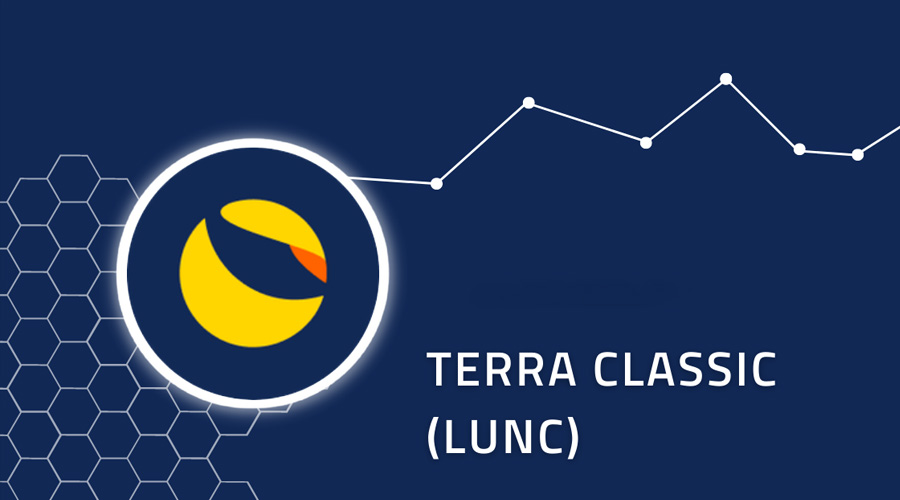
James Carter
What is Terra Cryptocurrency?: Here’s is What You Need to Know

The cryptocurrency market has witnessed a rapid expansion in recent years, with various digital assets offering unique features and functionalities. Among these, Terra cryptocurrency has emerged as a prominent player, focusing on stability and enabling a wide range of financial applications. In this article, we will delve deep into Terra Cryptocurrency, exploring its underlying technology, architecture, ecosystem, use cases, governance, challenges, and future outlook.
Understanding Terra
Definition and Basic Characteristics of Terra
Terra is a decentralized blockchain platform designed to offer stability and scalability to digital currencies. It achieves stability through its innovative stablecoin system, which maintains a peg to a fiat currency by employing algorithmic mechanisms. This stability fosters trust and encourages broader adoption of Terra’s native tokens, known as LUNA.
The Technology Behind Terra
Terra utilizes a sophisticated blockchain architecture that incorporates a combination of delegated proof-of-stake (DPoS) and Byzantine Fault Tolerance (BFT) consensus mechanisms. This hybrid approach ensures high throughput, fast transaction confirmations, and resistance to malicious attacks.
Key Features and Advantages of Terra
Terra stands out in the cryptocurrency landscape due to its unique features, such as algorithmic stability mechanisms, interoperability, and a robust developer ecosystem. These features not only facilitate real-world applications but also enhance the user experience and promote innovation within the Terra ecosystem.

Terra’s Architecture
Overview of Terra’s Blockchain and Consensus Mechanism
Terra’s blockchain leverages a combination of DPoS and BFT consensus mechanisms. DPoS ensures efficient block production and validation by relying on a select group of validators chosen through community voting. BFT guarantees consensus among validators and provides security against malicious actors.
Explanation of Terra’s Stablecoin Concept and Algorithmic Stability Mechanisms
At the core of Terra’s architecture lies its stablecoin system. Terra maintains price stability by using algorithmic mechanisms that adjust the supply of stablecoins based on market demand. This ensures a stable value, making Terra’s stablecoins reliable mediums of exchange and stores of value.
Role of Terra’s Native Token (LUNA)
LUNA plays a pivotal role within the Terra ecosystem. It serves as collateral for stablecoin minting, incentivizes validators through staking rewards, facilitates governance decisions, and fosters liquidity and stability within the network.
The Terra Ecosystem
Overview of Key Participants in the Terra Ecosystem
The Terra ecosystem consists of various stakeholders, including validators, users, developers, and governance participants. Validators secure the network, users transact with stablecoins, developers build applications on Terra, and governance participants influence decision-making within the ecosystem.
Description of Terra’s Stablecoin Family and Their Uses
Terra offers a family of stablecoins, with the TerraUSD (UST) as its flagship stablecoin. These stablecoins find utility in various financial applications, including remittances, payments, decentralized finance (DeFi), and cross-border transactions. Additionally, stablecoins like KRT and MNT cater to specific regions and use cases.
Discussion of Terra’s Partnerships and Integrations
Terra has formed strategic partnerships and integrations with leading projects and platforms to expand its reach and foster innovation. Collaborations with payment providers, DeFi protocols, e-commerce platforms, and traditional financial institutions offer greater utility and accessibility for Terra’s stablecoins.
Use Cases and Applications
Explanation of Terra’s Use Cases in Traditional Finance and DeFi
Terra’s stability and scalability enable a wide range of use cases in traditional finance and DeFi. It facilitates cost-effective remittances, enhances payment solutions, enables decentralized lending and borrowing, and empowers users to participate in yield farming, liquidity provision, and asset management within the DeFi ecosystem. The stability of Terra’s stablecoins provides a reliable foundation for these financial activities.
Overview of Terra’s Applications in Remittances, Payments, and Cross-Border Transactions
Terra’s stablecoins offer a transformative solution for remittances and cross-border transactions. By leveraging blockchain technology, transactions become faster, cheaper, and more transparent compared to traditional methods. Users can send and receive funds across borders with reduced fees and without the need for intermediaries.
Examples of Real-World Projects and Platforms Built on Terra
Terra has witnessed the development of several real-world projects and platforms that leverage its stablecoin infrastructure. Examples include payment gateways, merchant adoption platforms, decentralized exchanges (DEXs), lending protocols, and asset management platforms. These projects contribute to the growing ecosystem and showcase the versatility of Terra’s technology.
Terra’s Governance and Staking
Introduction to Terra’s Governance Model and Decision-Making Process
Terra’s governance model allows token holders to actively participate in shaping the platform’s future. Through on-chain voting, token holders can propose and vote on protocol upgrades, parameter changes, and funding initiatives. This decentralized governance ensures community involvement and decision-making transparency.
Overview of Staking on Terra and its Role in Network Security and Governance Participation
Staking LUNA is integral to the Terra network’s security and governance. Validators stake LUNA to secure the network and validate transactions. In return, they earn staking rewards and play a crucial role in maintaining consensus. Additionally, staking LUNA grants token holders voting rights, enabling them to actively participate in governance decisions.
Benefits and Incentives for Staking LUNA
Staking LUNA offers several benefits and incentives for token holders. These include earning staking rewards, participating in governance, and potentially influencing the direction and development of the Terra ecosystem. Staking provides an opportunity to generate passive income while actively contributing to the network’s security and stability.
WATCH THE VIDEO BELOW
Challenges and Future Outlook
Discussion of Potential Challenges and Risks Associated with Terra
While Terra offers innovative solutions, it also faces challenges and risks. These may include regulatory uncertainties, market volatility, competition from other stablecoin projects, and potential security vulnerabilities. It is crucial for Terra to navigate these challenges effectively to ensure sustained growth and adoption.
Overview of Terra’s Roadmap and Future Developments
Terra’s roadmap outlines its vision for the future, including plans for expanding its ecosystem, improving scalability, enhancing interoperability, and exploring new partnerships. The development of Layer 2 solutions and cross-chain compatibility are among the key focus areas to address scalability challenges and enable seamless integration with other blockchain networks.
Analysis of the Growth Potential and Long-Term Prospects of Terra
Despite the challenges, Terra demonstrates significant growth potential and long-term prospects. Its stability-focused approach, vibrant ecosystem, and real-world applications position it as a key player in the cryptocurrency space. As adoption increases and partnerships expand, Terra has the potential to reshape global finance and drive financial inclusion on a massive scale.
Summary
In conclusion, Terra cryptocurrency represents a groundbreaking innovation in the realm of stablecoins and decentralized finance. Its stability mechanisms, robust ecosystem, and wide range of use cases make it a formidable player in the cryptocurrency market. As Terra continues to evolve, it has the potential to revolutionize traditional finance, empower individuals, and foster global financial inclusivity. By providing stability, scalability, and interoperability, Terra paves the way for a new era of financial innovation.
Through its algorithmic stability mechanisms, Terra ensures that its stablecoins maintain a peg to a fiat currency, making them reliable mediums of exchange and stores of value. This stability opens up a myriad of use cases, from remittances and cross-border transactions to payments and decentralized finance applications. Terra’s architecture, built on a hybrid consensus mechanism and a robust blockchain infrastructure, ensures scalability, security, and fast transaction confirmations.
Within the Terra ecosystem, various participants play essential roles. Validators secure the network and validate transactions, while users transact with stablecoins and benefit from their stability. Developers leverage Terra’s technology to build innovative applications, and governance participants actively shape the platform’s future through decentralized decision-making.
Latest
Altcoins
09 May 2024
Altcoins
19 Apr 2024
Altcoins
16 Jan 2024
Altcoins
31 Aug 2023
Altcoins
24 Jun 2023
Altcoins
24 Jun 2023













